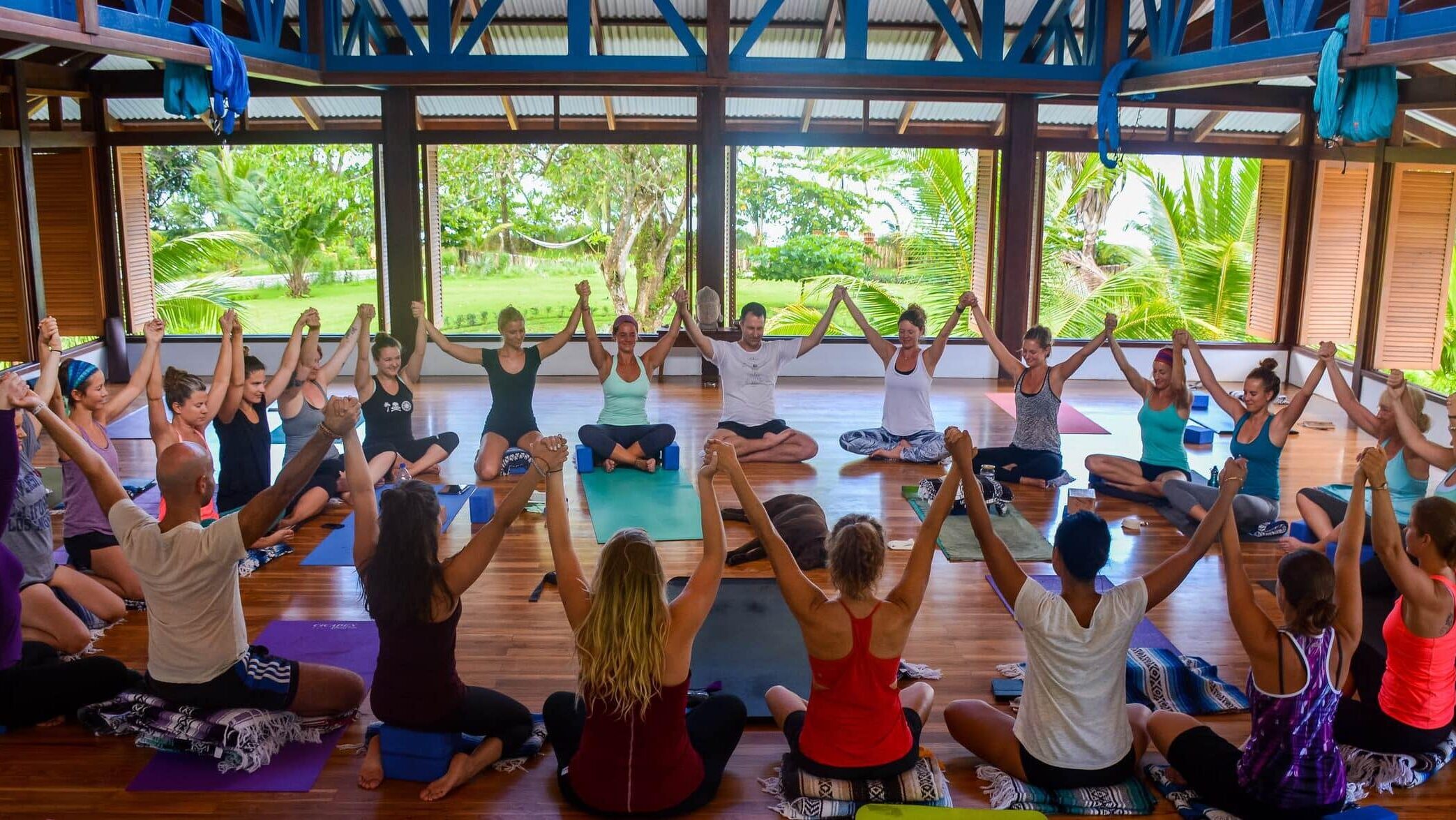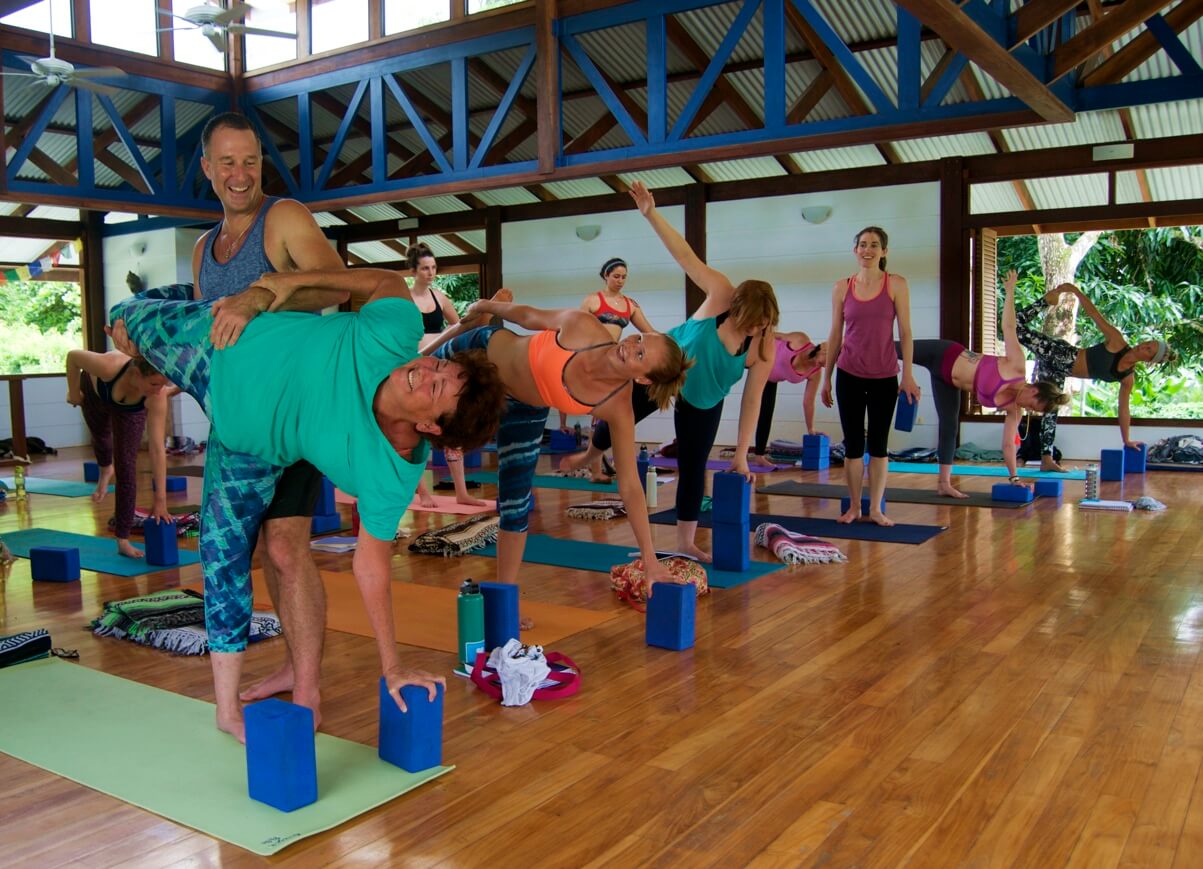One of my favorite memories from my stay at Blue Osa was watching a bunch of baby sea turtles emerge from their shell and eventually make their way into the Pacific ocean.
I decided to participate in Osa Conservation’s sea turtle preservation program at Piro Research Station after hearing such wonderful things from other guests about The Turtle Getaway Package. I quickly found out why.
Even though I came prepared with trail snacks, a headlamp and rubber boots, nothing could have prepared me for the incredible journey I was about to have alongside guide/conservationist, Manuel Sanchez.
Night Patrol
We leave the conservation base at 8 p.m. sharp for night patrol. After a 30-minute hike through the jungle, we find ourselves on the private, pristine Piro Beach on Costa Rica’s lush Osa Peninsula.
Our job for the next several hours is to lookout for Olive Ridley sea turtle tracks and mama sea turtles nesting on the beach.
If we are lucky enough to spot a mama nesting on shore, we will measure her carapace for research purposes and take note of where she lays her eggs. If a nest is too close to shore, it is considered vulnerable and we will relocate it to a nearby hatchery built by Osa Conservation.
We arrive on the beach and immediately remove our (drenched and muddy) rubber boots to begin our barefoot turtle-trek along the beach. There is something rebellious, yet soothing about walking barefoot under the moonlit sky.
The silver sky provides just enough light for us to witness the giant waves crashing beside us. No turtle sightings yet, but I’m certain I have been transported to a Jurassic Park set.
The beauty that surrounds me is surreal.
I gaze down and notice giant circular footprints in the sand. I nervously ask Manual if we’ve stumbled upon big foot. He laughs. “They are just water buffalo tracks,” he says.
Sure enough, we soon find ourselves practically face-to-face with the burly animal. He was just hanging by the river, minding his own business when our flashlight gave him a scare. He is confused to see us on his territory. We have a brief staring contest with the big buffalo and go our separate ways.
Four Babies Ready to Go Home
Manuel shows me the newly built sea turtle hatchery that can hold about 75 nests every year.
He tells me one nest of Olive Ridleys hatched earlier that day and it included four late bloomers that are ready to be released tonight. I put on my gloves and gently place the babies in a bucket to prepare them for their journey toward the ocean.
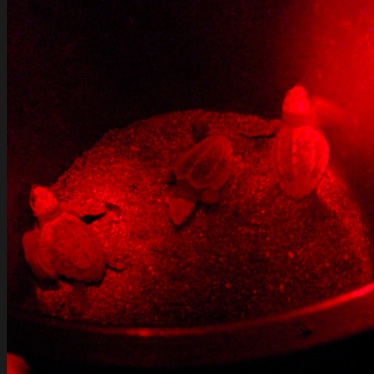
Four Late Bloomers are Ready to be Released
The staff and volunteers at Osa Conservation have worked hard to collect data to ensure these babies will be released in the spot where they were originally born. Hopefully, the female turtles will come back to that spot and give birth to continue the cycle of life. Once we arrive in the appropriate zone on the beach, we release them one-by-one. The baby Olive Ridley sea turtles safely make their way home.
After much patience and no turtle sighting, we make our way back to the research station for a few hours of rest so we can be ready for morning patrol.
Morning Patrol
After (much needed) coffee, we leave basecamp around 5:30 a.m. and head for the beach to help save more sea turtles.
The hike is just as beautiful (and a little less scary) in the daylight.
Even though we did not see any adult Olive Ridleys last night, plenty of turtle tracks suggest they did indeed visit. It’s as though the mamas waited for us to leave so they could nest in privacy.
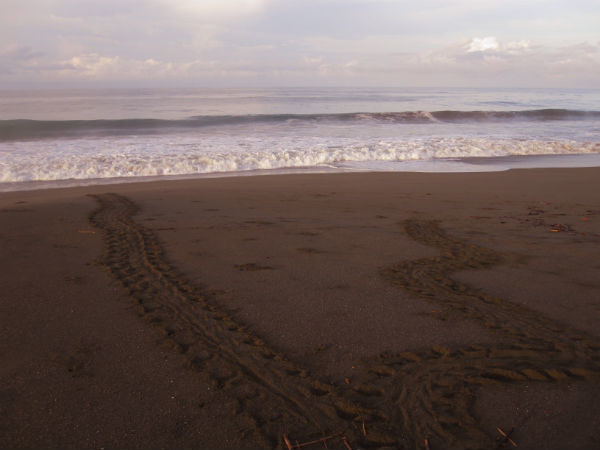
Olive Ridley turtle tracks on Piro Beach
We triangulate the nests that are in safe areas and relocate the vulnerable nests to the nearby hatchery.
The relocation process is quite tedious. We must dig up all the eggs, count them, delicately place them in a bucket, measure the depth and width, and save a little original sand in order to replicate it as much as possible in the hatchery.
A Haven For Turtles
Back at the hatchery, I learn that the sex of a turtle is determined by temperature. Nests that are in the shade will produce all males and those that are in the sun will make all females.
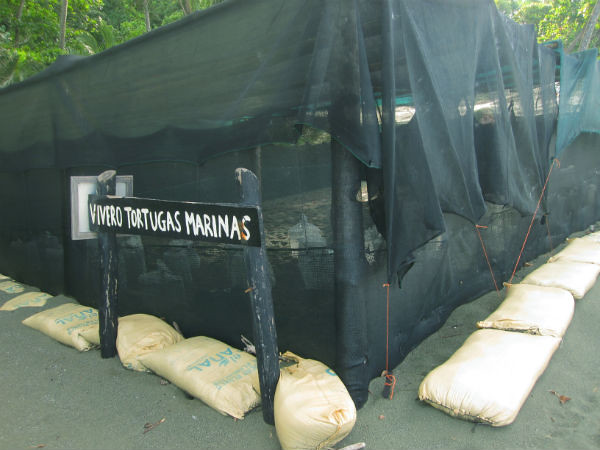
I decide to plant my nest of about 70 sea turtle eggs in the sun. I have always wanted a bunch of daughters.
It’s not even 9 a.m. yet and I’ve helped create life.
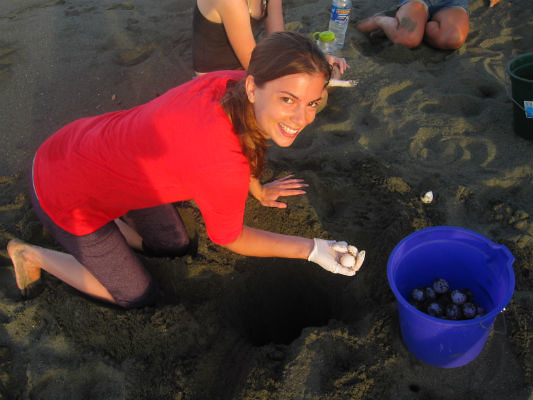
Lianne digs up Olive Ridley turtle eggs to relocate the vulnerable nest to the hatchery
All of a sudden we see something moving at the corner of our eye. Turns out 64 baby turtles have hatched over night and are now ready to emerge.
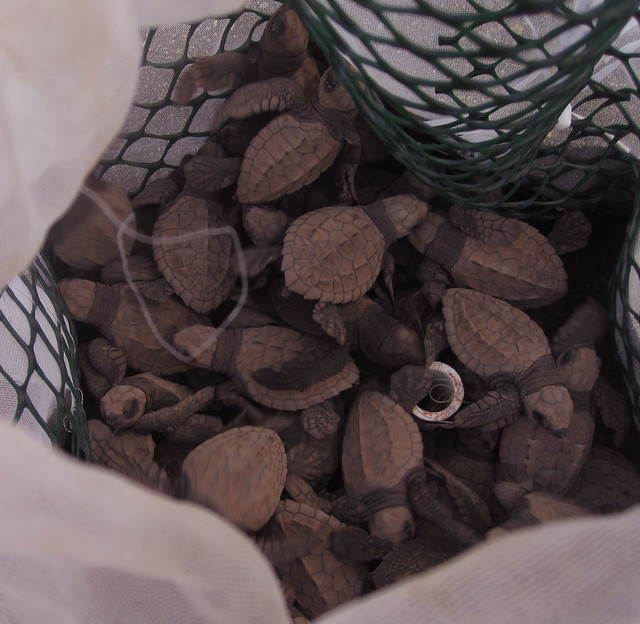
Photo by Lianne: 64 Olive Ridley Turtles are born in the hatchery
The tiny sea creatures wiggle around vigorously as if to say “Set me free now!”
So we gently measure them, place them in the bucket and walk toward the zone where they were once eggs.
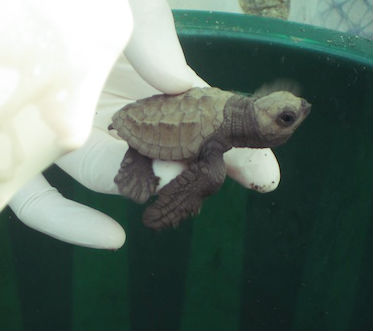
Photo by Lianne: Baby Olive Ridley
Full Circle
I delicately release all 64 turtles onto the sand. They instinctively know they have one mission and one mission only: make it to the ocean. We watch them awkwardly and adorably wiggle their way into their new salty home.
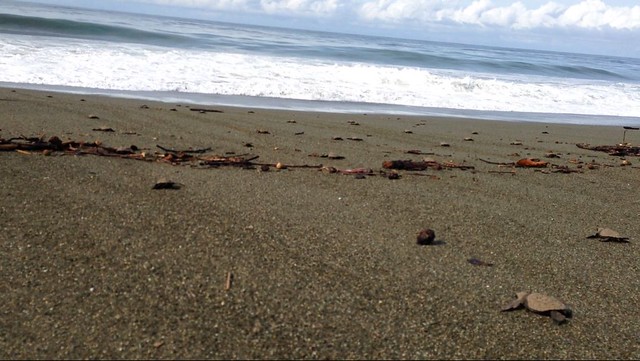
Photo by Lianne: The group of 64 Olive Ridley turtles make their way back home
The route home for these sea turtles is not an easy one. They are faced with many obstacles along the way, including man-made threats like fishing and poaching.
Luckily organizations like Osa Conservation are in place to help preserve these beautiful creatures of the sea.
Book/Inquire Now
Got pain? This will help you!
YOU DESERVE TO LIVE PAIN-FREE...
Receive 7 short, simple, and effective practices to alleviate knee, hip, low back, neck, shoulder pain, and more!
All you need is 5 minutes per lesson and it's FREE!
This revolutionary approach to yoga is new, and no one else is teaching this! Since I created Applied Yoga Anatomy + Muscle Activation™ and started teaching it consistently, I've witnessed students heal long-standing injuries, access yoga postures they never thought possible, and tell me over and over again how their body just feels better.
I hope you'll join me on this journey!
~Yogi Aaron
Is Yoga Teacher Training Right For Me?
We Created This FREE 5 Part Series So You Can Get All The Information To Make The Right Choice.
In this series, you will learn:
-
- Am I a candidate for yoga teacher training??
-
- What will I learn in a YTT?
-
- Do I need to have a perfect downward dog to attend YTT?
14-Day 200-Hour Yoga Teacher Training in Costa Rica
If you are looking for a 14-day 200 hour Yoga Teacher Training Costa Rica Immersion, you have landed in the right place. Join the next one!
300-Hour, 28-Day Yoga Teacher Training
Do You Feel Called To Something Greater?
This 300-Hour Yoga Teacher Training immersion training at Blue Osa will immerse you in yoga for one month.
You will have the specific transformational skills and yogic practices you need in order to connect with your higher purpose.
And more! You will be able to offer these transformative skills to others!



